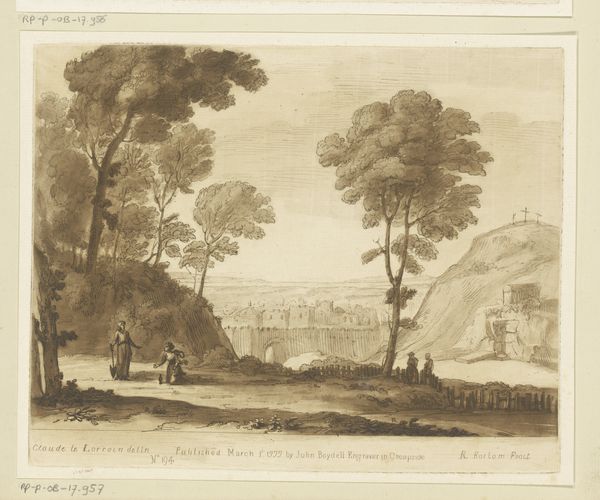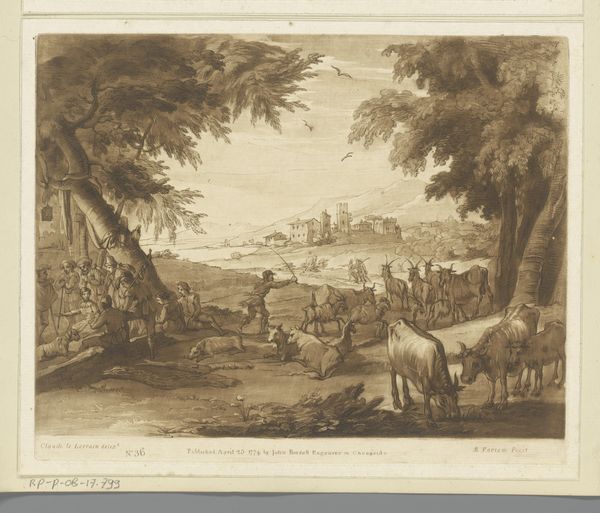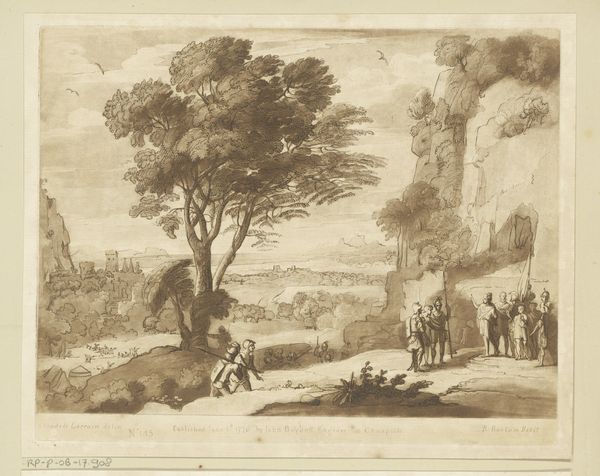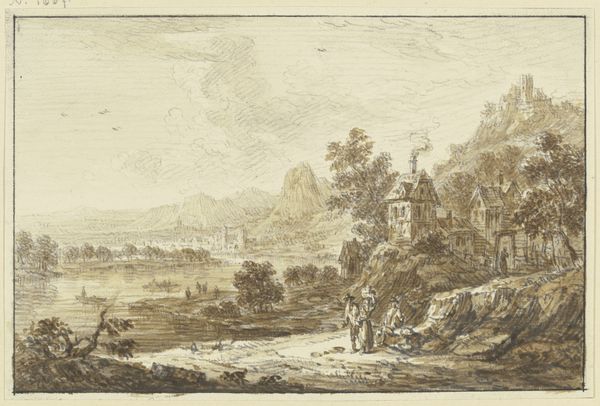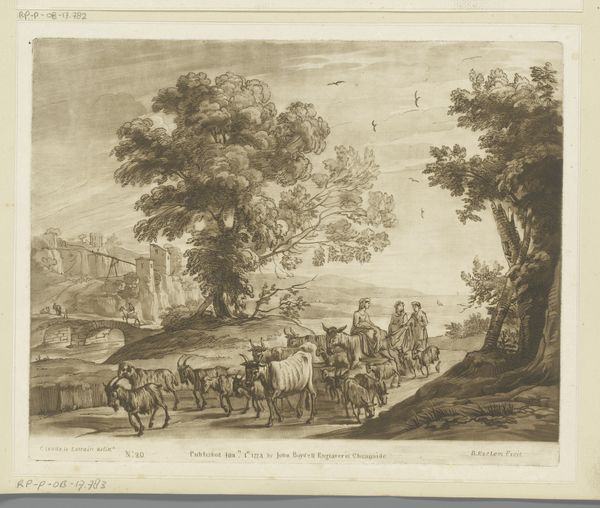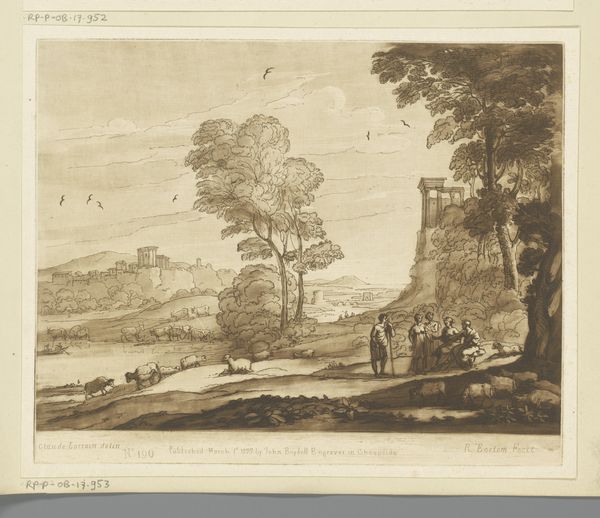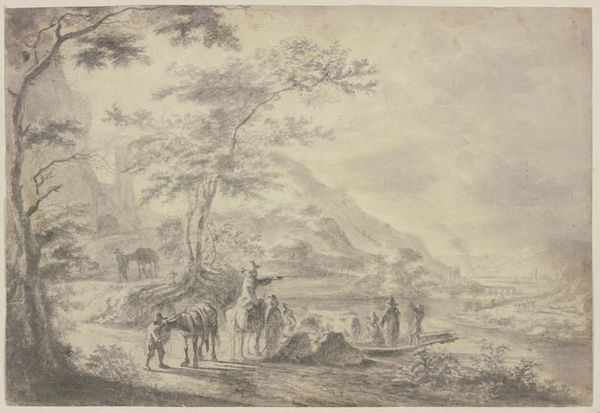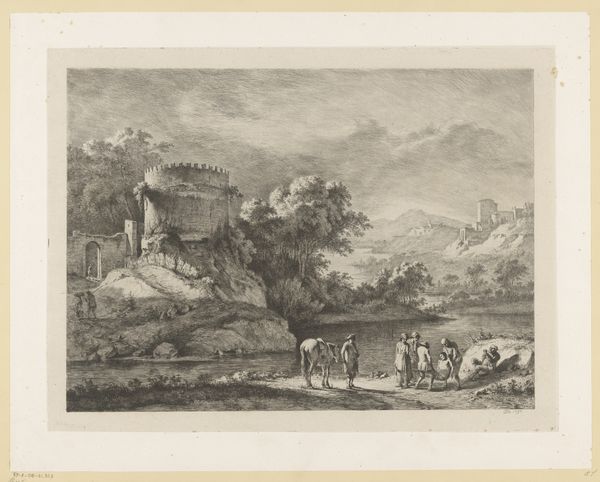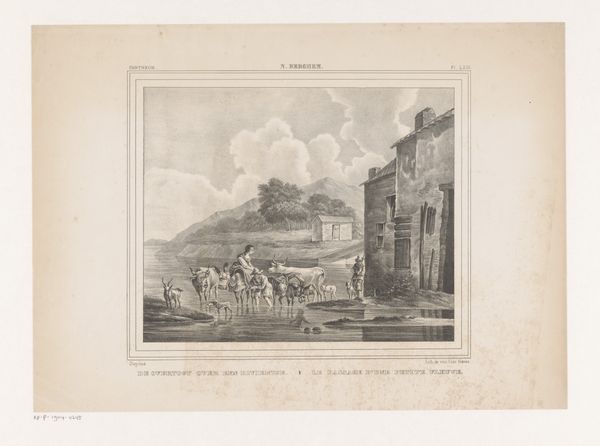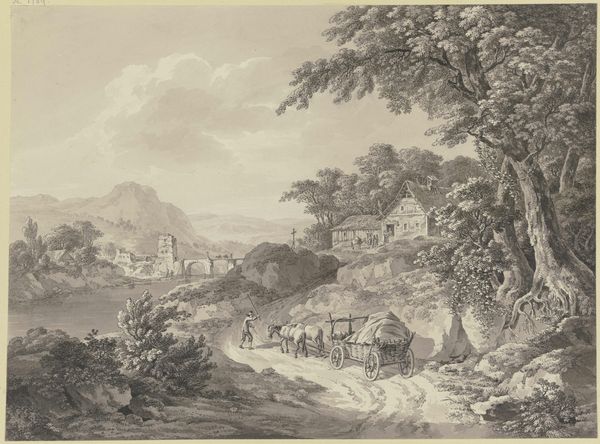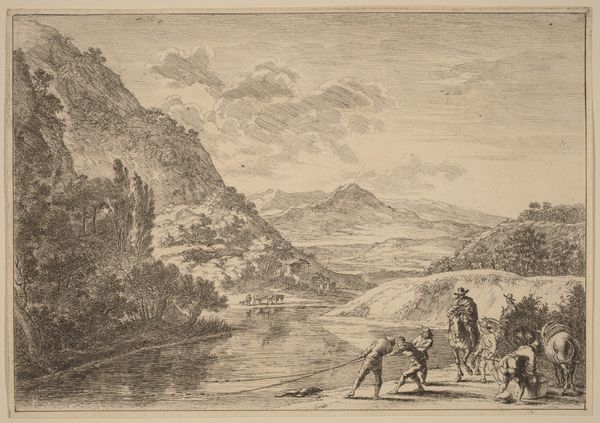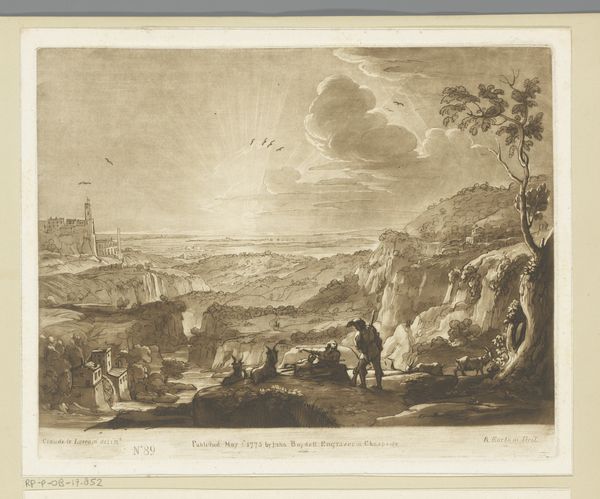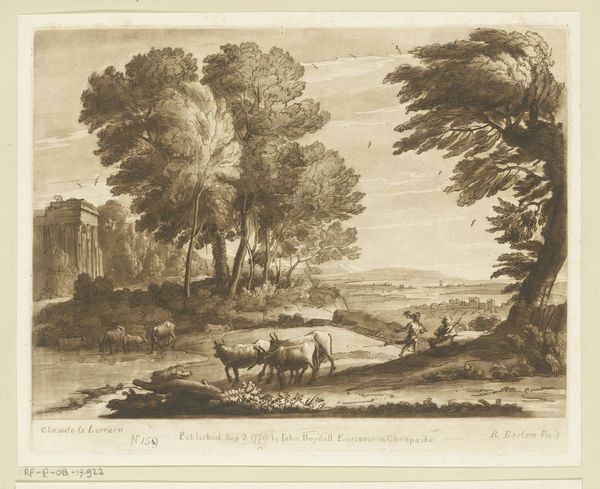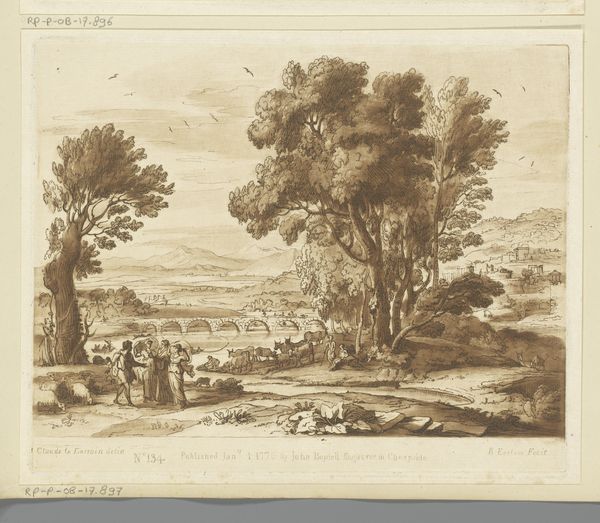
print, engraving
# print
#
landscape
#
history-painting
#
engraving
Dimensions: height 206 mm, width 260 mm
Copyright: Rijks Museum: Open Domain
This sepia-toned print, Landschap met gezicht op Delphi en processie (Landscape with a View of Delphi and Procession), was created in 1777 by Richard Earlom. The image is realized through the technique of etching, where lines are incised into a metal plate, inked, and then pressed onto paper. Earlom’s print evokes a scene from classical antiquity, complete with temples and a festive procession. But let’s consider the material reality of its making: the skilled labor involved in etching the plate, the division of labor in the print shop, and the consumption of prints like these by a growing middle class hungry for picturesque views of both real and imagined worlds. The relatively small size, dictated by the dimensions of the metal plate, also speaks to its function as a portable image, easily collected and shared. By considering the materiality and production of this print, we can better understand its place within the artistic and economic landscape of 18th-century Europe, and reflect on how it challenges the distinction between art and craft.
Comments
No comments
Be the first to comment and join the conversation on the ultimate creative platform.
